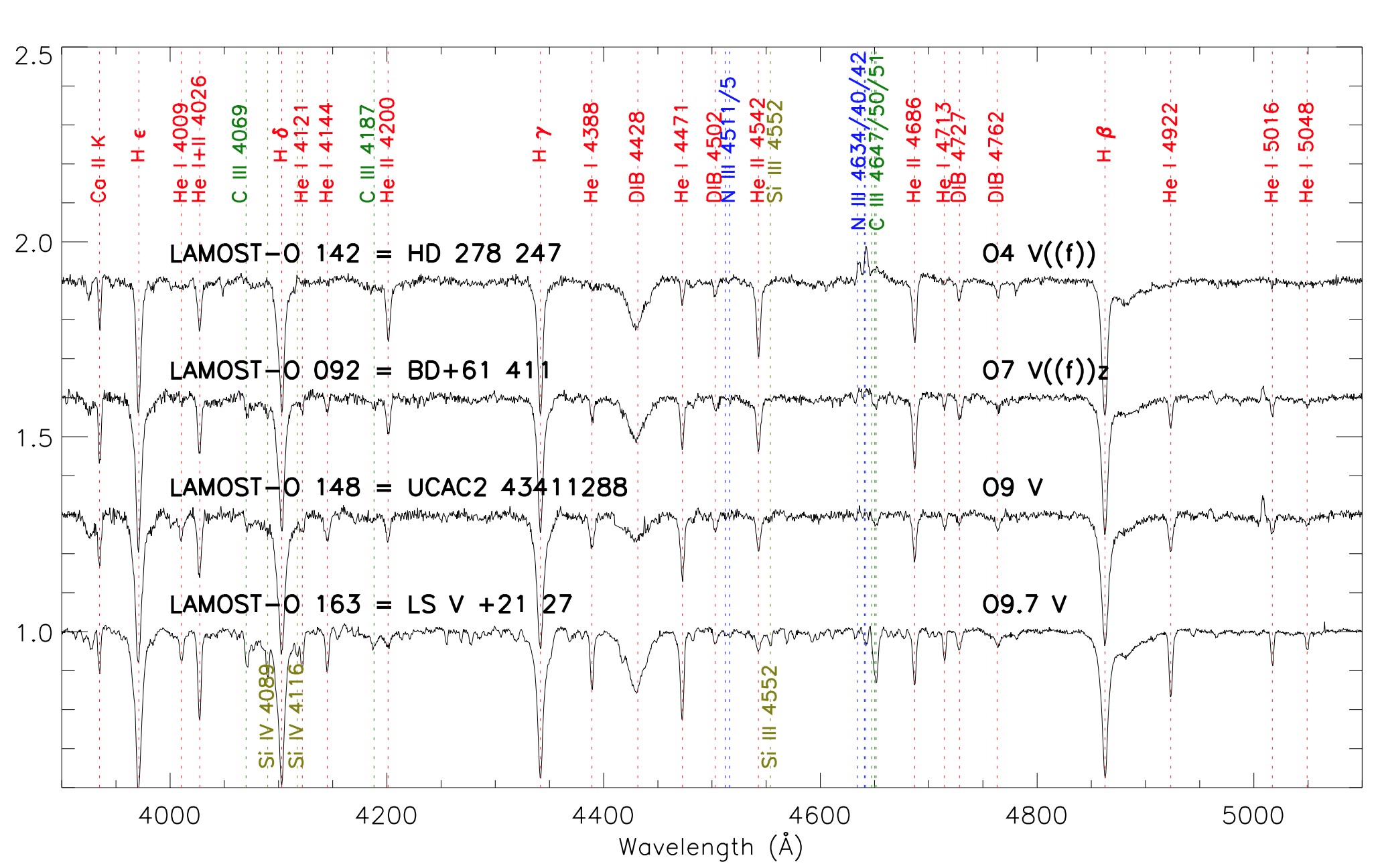
Based on the data obtained by the Large Sky Area Multi-Object Fiber Spectroscopic Telescope (LAMOST), Dr. LI Guangwei, Associate Professor of National Astronomical Observatories of Chinese Academic of Sciences (NAOC), cataloged 209 Galactic O-type stars, 135 of which are new. These 135 new O-type stars are the largest number of new O-type stars discovered in a single database to date.
The results were published in The Astrophysical Journal Supplement Series.
O-type stars are very hot and massive stars that are very rare and short-lived. They are so luminous that they can illuminate the galaxy they live. They produced tremendous amount of ionizing photons puncturing the neutral gas and made the universe transparent in the Epoch of Reionization.
"The stellar winds and powerful explosions of O-type stars when they die strongly stir up the gas in galaxies, while their ejecta enriches surrounding gas, pushing the chemical evolution of the galaxies," said Dr. LI.
They are thought to be the progenitors of many core-collapse supernovae and long gamma-ray bursts, and are also responsible for some gravitational-wave events.
Only 590 O-type stars, found by astronomers over the past 100 years, are recorded in the Galactic O-Star Catalog (GOSC), which is the largest Galactic O-type star catalog with spectroscopic information.
Massive stars are located in the Galactic plane and deeply buried in the dust, so colors of massive stars are similar to those of cooler stars because of the heavy extinction and reddening. As a result, they cannot be separated from billions of foreground cooler stars.
LAMOST is currently the telescope with the highest spectral acquisition rate in the world. So far, it has obtained more than 17 million spectra, including both low- and medium-resolution spectra. "It is only from these huge amount of data that so many new O-type stars can be found," said Dr. LI.

Four LAMOST O-type stars. Their spectra are dominated by H and He lines. The earlier the type, the higher the ratio of He II 4542/ He 4471. (Image by LI Guangwei)
Among these 135 newly discovered O-type stars, there are 12 new Oe stars, doubling the number of Oe sample to 25; some O-type stars located in the Outer Arm are also discovered.
Furthermore, some O-type stars show variability in spectra according to comparison of the spectra of LAMOST and literature. These published O-type stars are all assigned spectral types based on the new coherent spectral classification criteria.
"The follow-ups and further studies of these O-type stars can undoubtedly help us understand not only their observational phenomenon and natures, but also some frontiers and hot spots of astronomy," said Dr. LI.

86-10-68597521 (day)
86-10-68597289 (night)

52 Sanlihe Rd., Xicheng District,
Beijing, China (100864)

